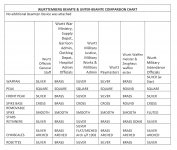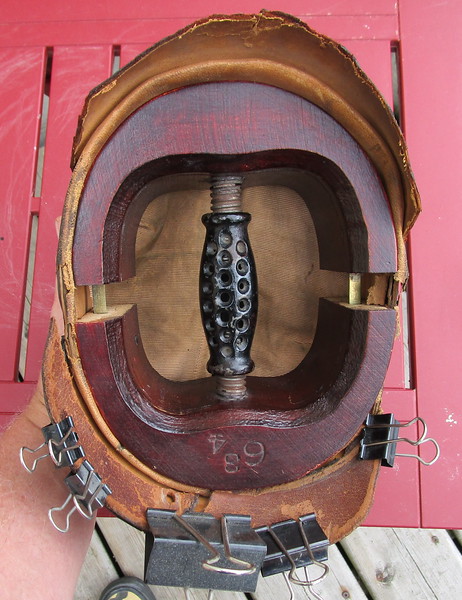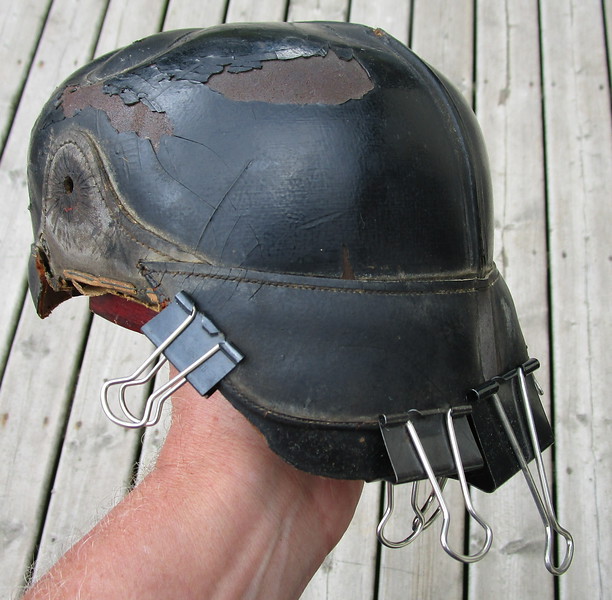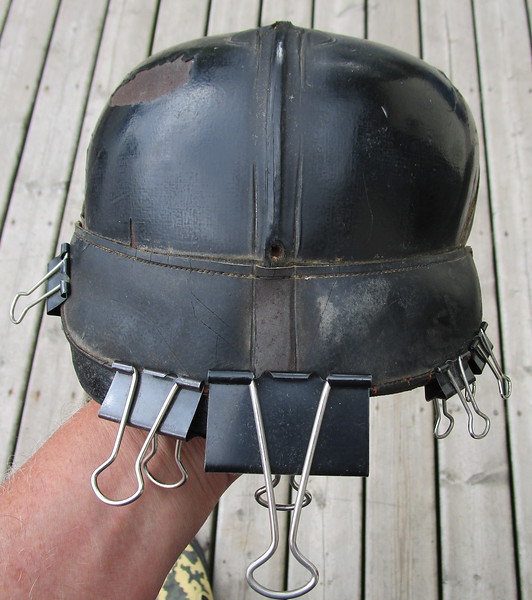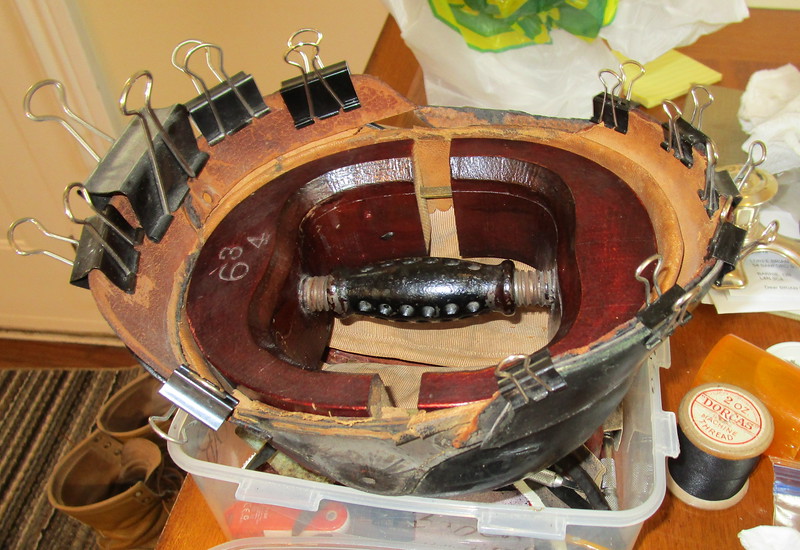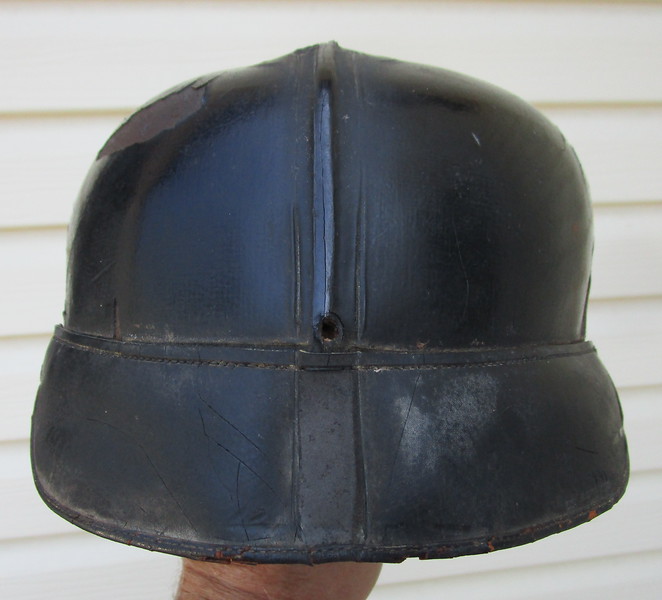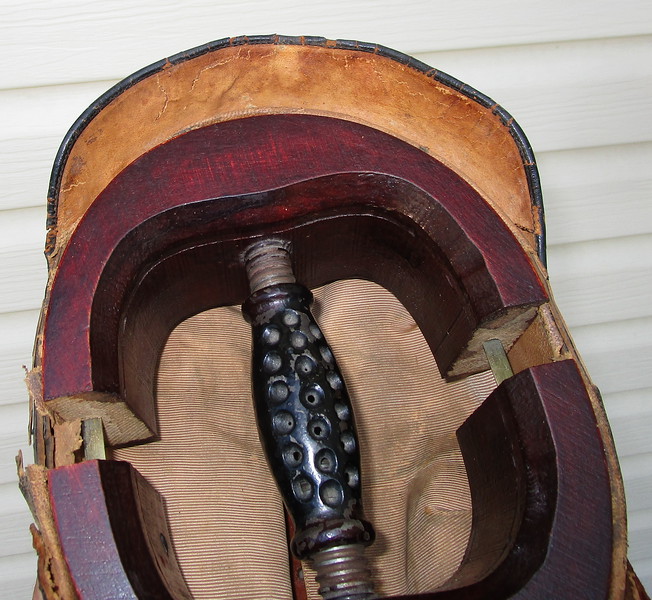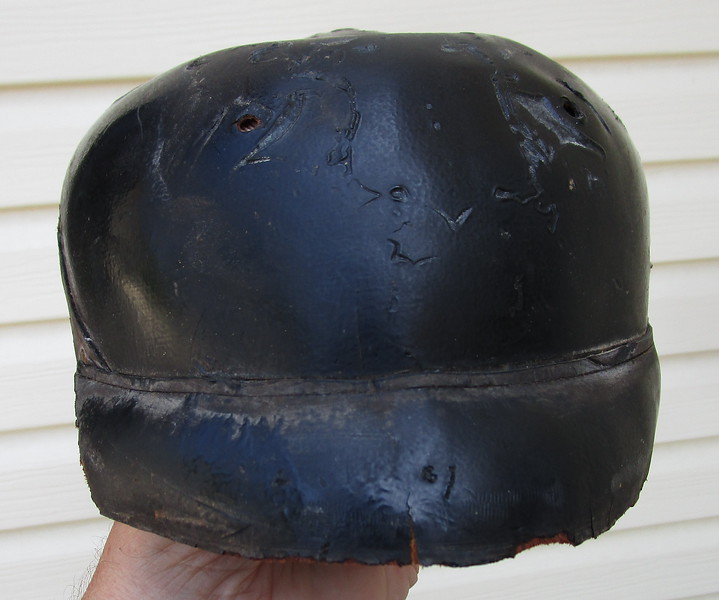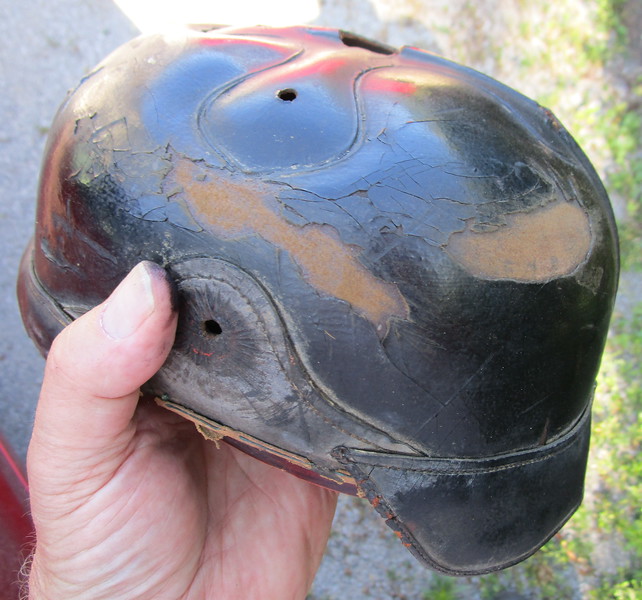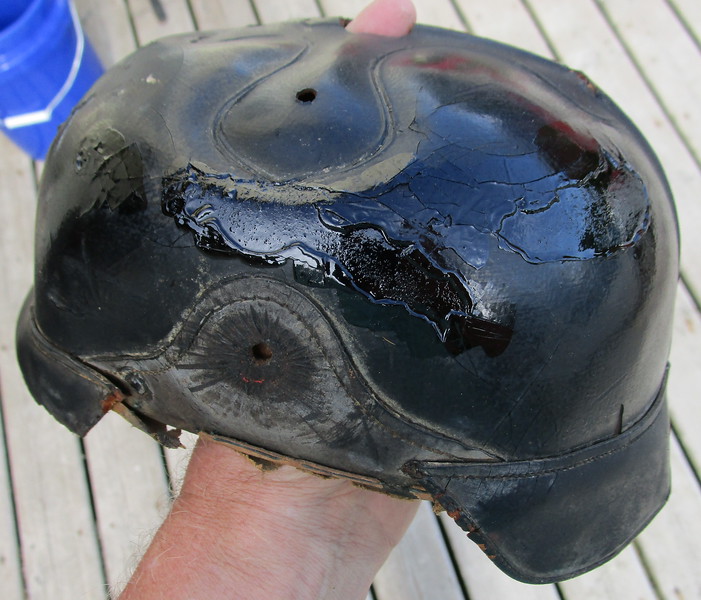I have started the restoration, first removing all fittings and then cleaning them.
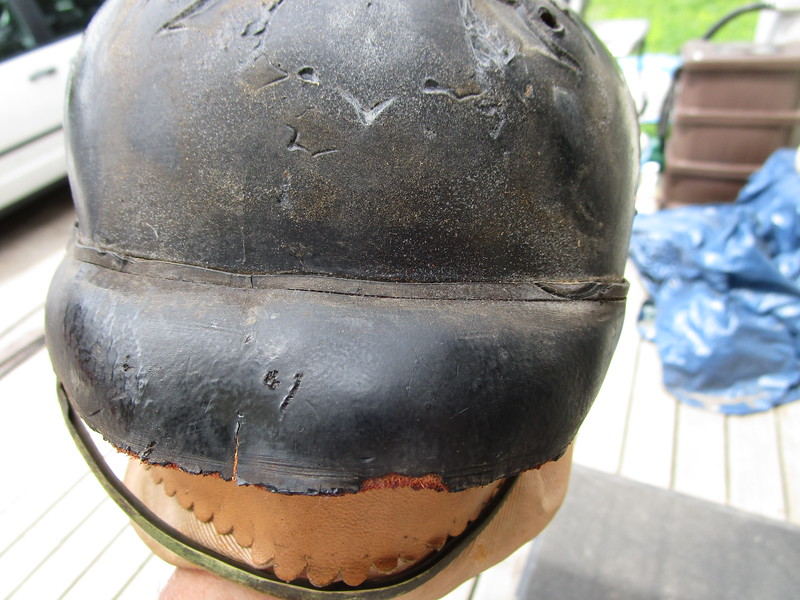
Here is a good shot of the front visor, you can see the problem with the stitch line. I have never seen this kind of shrinkage before.
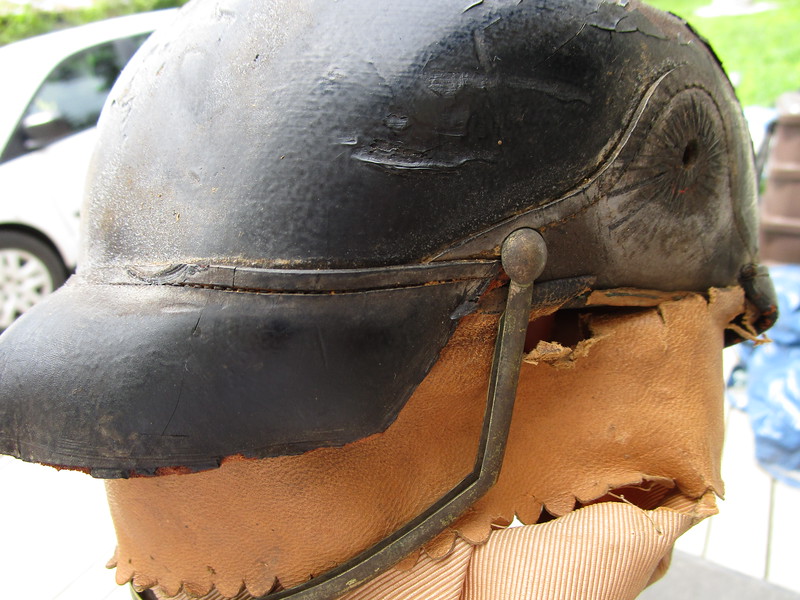
Fortunately, the top is in good shape, more often than not, these cruciform tops are sunken in.
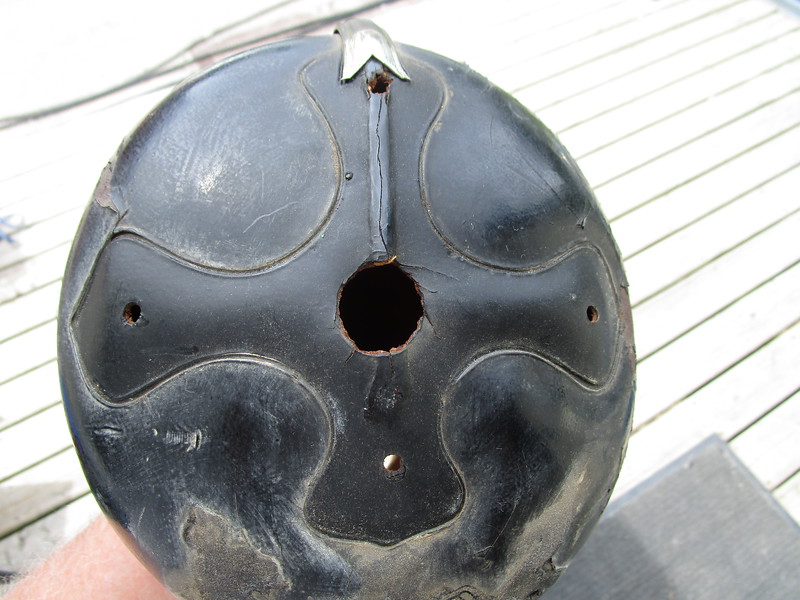
The spike top unscrews for the trichter and also reveals the original neusilber finish.....100 years of oxidation and "crud" on the rest. The fittings on this helmet as the pictures show were very dirty.
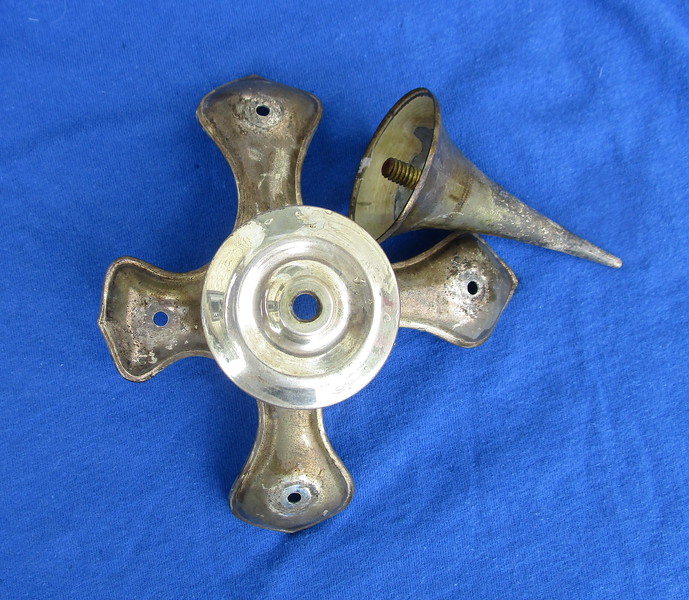
The uncleaned fittings removed from the helmet. The visor trim is bent out of shape due to the shrinkage of the front visor. This helmet has been subjected to heat a some time, not enough to melt the finish but enough to shrink the visors.
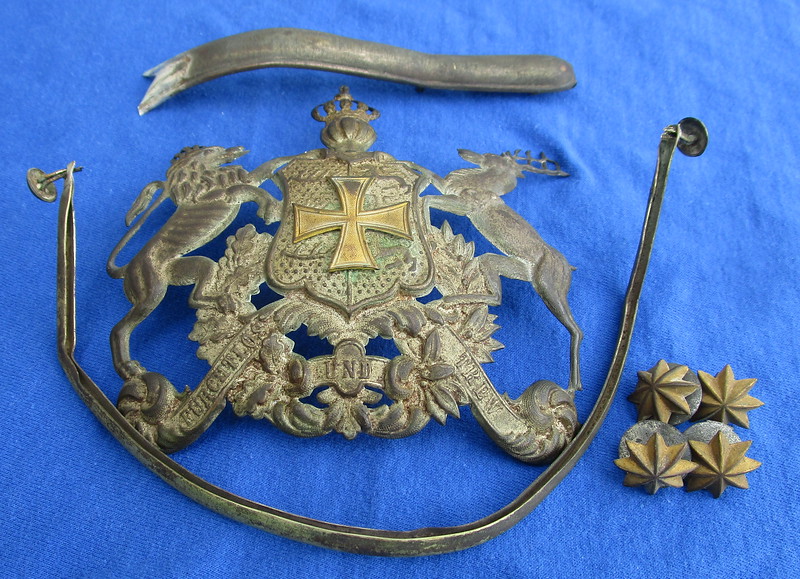
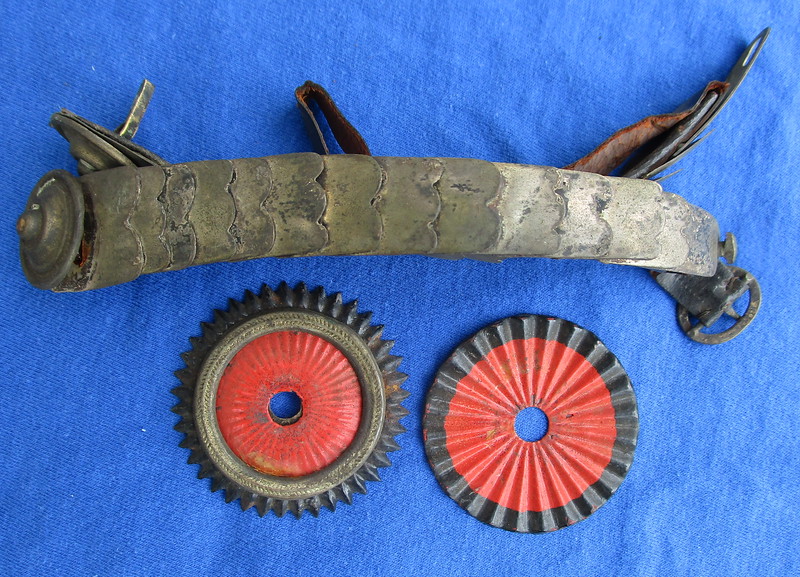
The neusilber flat scales and kokarden, there are 13 scales plus end fitting...always count the scales when buying these. There are 2 reasons for doing this, first so you know they will fit your helmet and second so you know they are a matched pair .
.
All fittings have now been cleaned, what a difference!
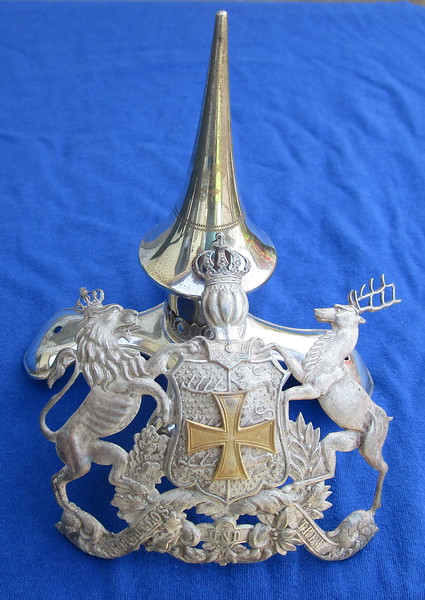
There is a bit of pitting on the spike top but all in all things have cleaned up nicely. The frosting on the wappen is excellent!
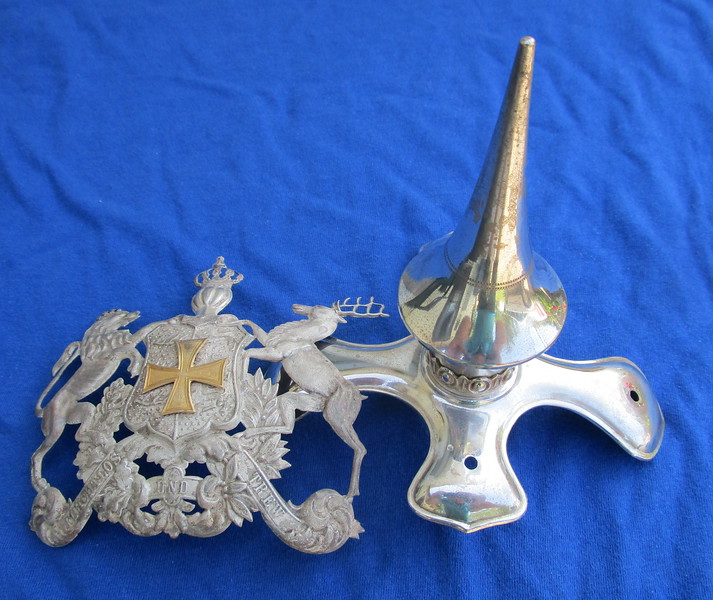

Here is a good shot of the front visor, you can see the problem with the stitch line. I have never seen this kind of shrinkage before.

Fortunately, the top is in good shape, more often than not, these cruciform tops are sunken in.

The spike top unscrews for the trichter and also reveals the original neusilber finish.....100 years of oxidation and "crud" on the rest. The fittings on this helmet as the pictures show were very dirty.

The uncleaned fittings removed from the helmet. The visor trim is bent out of shape due to the shrinkage of the front visor. This helmet has been subjected to heat a some time, not enough to melt the finish but enough to shrink the visors.


The neusilber flat scales and kokarden, there are 13 scales plus end fitting...always count the scales when buying these. There are 2 reasons for doing this, first so you know they will fit your helmet and second so you know they are a matched pair
All fittings have now been cleaned, what a difference!

There is a bit of pitting on the spike top but all in all things have cleaned up nicely. The frosting on the wappen is excellent!


